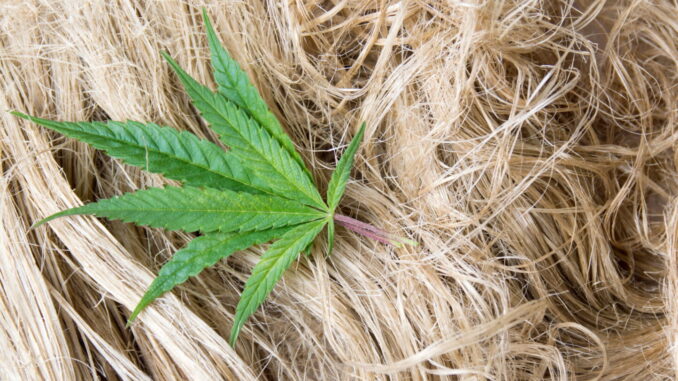
[ad_1]
The hemp-derived fiber market is growing exponentially. The Business Research Company, a global market research and consulting firm located across the globe, updated its reports with latest data on hemp fiber for 2024 and projections up to 2033, and the projections look promising.
The Business Research Company’s “Hemp Fiber Global Market Report 2024” was published on March 8 and provides a comprehensive source of information that covers every facet of the market. According to the TBRC’s market forecast, the hemp fiber market size is predicted to reach $50.38 billion in 2028 at a compound annual growth rate (CAGR) of 35.0%.
The growth in the hemp fiber market is due to increasing legalization to cultivate industrial hemp. Asia-Pacific region is expected to hold the largest hemp fiber market share. Major players in the hemp fiber market include Shenyang beijiang, BaFa Holding BV, Plains Industrial Hemp Processing Ltd., Industrial Hemp Manufacturing LLC, Hemp Oil Canada Inc.
“Hemp fiber refers to one of the robust members of the family of strong natural fibers, which are generated from the cannabis family’s hemp plant,” the report reads. “The plant’s stem is made up of long strands that are used to make hemp fabric. By using a technique called retting, these fibers are extracted from the bark and then spun together to produce a continuous thread that can be woven into textiles.”
The report also identifies what parts of the plant are typically used in the hemp fiber process.
“The main types of hemp fiber are long (bast) fibers, and short (core) fibers. The long (bast) hemp fiber market refers to the soft woody fiber obtained from the stems of dicotyledonous plants and is used for textiles and cordage, the report continues. “The different sources include organic and conventional, and are used in food, beverages, personal care products, textiles, pharmaceuticals, and other applications.”
Researchers divided hemp fiber market segments by the following parameters:
• By Type: Long (bast) Fibers, Short (core) Fibers• By Source: Organic, Conventional• By Application: Food, Beverages, Personal Care Products, Textiles, Pharmaceuticals, Other Applications• By Geography: The global hemp fiber market is segmented into North America, South America, Asia-Pacific, Eastern Europe, Western Europe, Middle East and Africa.
The market report includes Hemp Fiber Market Characteristic, Hemp Fiber Market Trends And Strategies, Hemp Fiber Market – Macro Economic Scenario, Hemp Fiber Market Size And Growth, Hemp Fiber Market Competitor Landscape And Company Profiles, Key Mergers And Acquisitions In The Market, and many other topics.
Industrial Hemp Uses
Every day, people are finding more uses for industrial hemp. (Just refer to the works of Jack Herer, the “Emperor of Hemp.” Architects, for instance, are increasingly relying on hemp as a cleaner, more efficient replacement for traditional home construction materials.
A recently published article by The Cool Down (“America’s mainstream climate brand”) detailed how hemp can be “transformed into a material called hempcrete.”
“Hempcrete is a carbon-negative building material made out of hemp, which is increasingly being used in place of concrete. The biocomposite material is created from hemp shiv—the woody core of hemp stalks—and mixed with a binder, such as lime powder, and water,” according to the article. “The result is a tough, adaptable material that can be mixed with varying proportions of hemp and lime depending on its intended purpose.
Hemp is constantly proving to be useful in making other materials and products. A Wisconsin-based hemp battery manufacturing company, for instance, created a goal to hire former employees of Energizer.
Portage, Wisconsin-based Wisconsin Battery Co. (WinBat) makes batteries out of hemp instead of graphene, for use in devices like hearing aids. Earlier this month, WinBat announced that it has acquired 17 acres of land in the Portage Industrial Park to develop its battery plant, a According to a Dec. 21, 2023 press release,
Last October, a variety of hemp plant genetically modified to produce little-to-no THC was approved by the United States Department of Agriculture as safe to grow and breed on U.S. soil.
The USDA’s Animal and Plant Health Inspection Service (APHIS) released a notice about the plants last week, created and submitted by Indiana-based Growing Together Research, a biotechnology company specializing in cannabis, hemp, psychedelics and agriculture. APHIS regulates the “movement of organisms modified or produced through genetic engineering.”
“APHIS found this modified hemp is unlikely to pose an increased plant pest risk compared to other cultivated hemp,” the USDA notice said. “As a result, it is not subject to regulation under 7 CFR part 340. From a plant pest risk perspective, this hemp may be safely grown and bred in the United States.”
[ad_2]
Source link

Soyez le premier à commenter